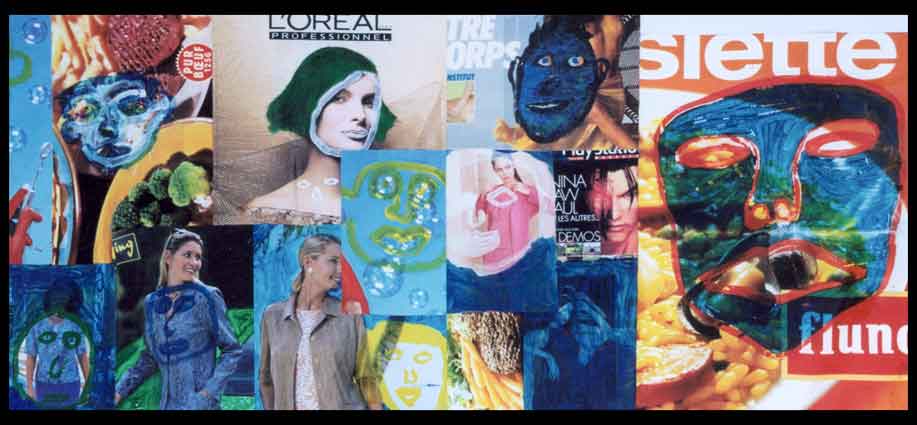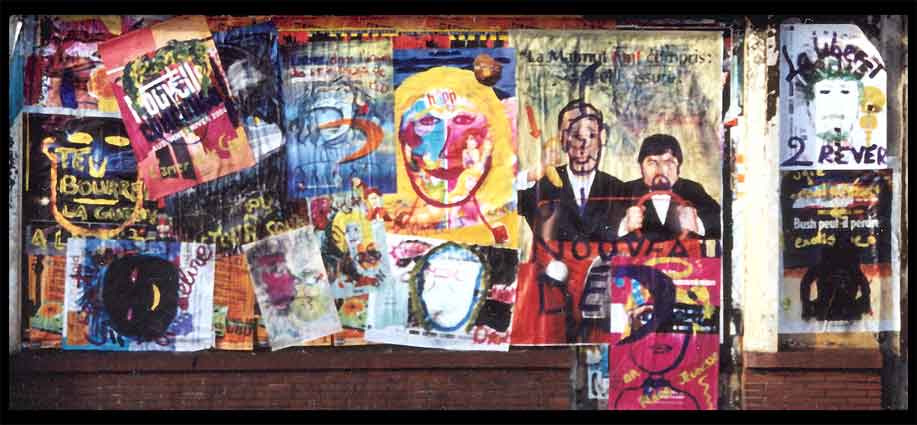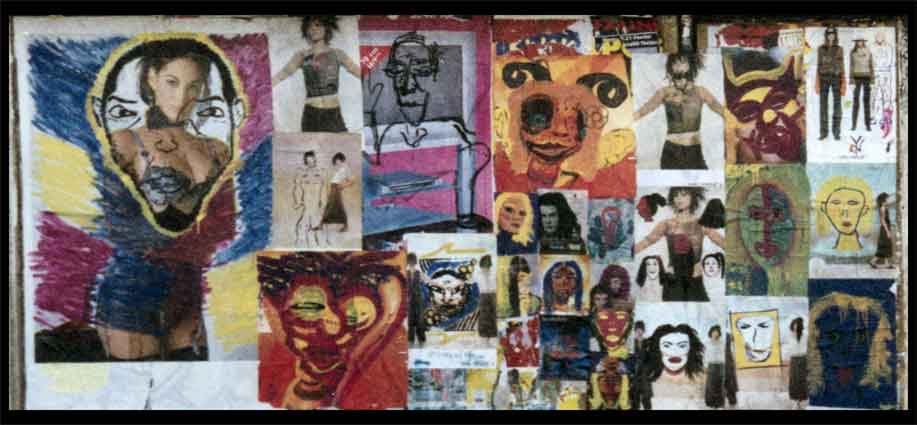|
|
« J'ai essayé de comprendre comment un mode de discours qui semble aussi trivial, aussi navrant dans sa finalité commerciale a pu prendre autant d'importance. » (Dominique Quessada, « Le discours publicitaire est devenu le maître des discours », Politis n° 693)
Ce projet fut l’objet de trois expérimentations qui se déroulèrent en trois lieux différents en collaboration avec des enfants et des étudiants en carrières sociales. Chacun de ces moments ont constitué un contexte précis conditionnant sa situation autour de la question des relations qu’entretient l’individu avec la société dans laquelle il évolue. De façon plus précise, et pour affirmer un réel questionnement critique, j’ai souhaité travailler sur la publicité et l’autoportrait.
La prise en compte du désir et la réponse directe au bonheur dominent dans le discours publicitaire, confrontant un objet et le désir du sujet. La publicité fait preuve d’omniprésence, sous la forme d’images, constamment renouvelées, éparpillées dans l’environnement social et urbain. Elles incarnent le décor physique et moral de nos sociétés, transmettant les représentations sociales qui servent, dans bien des cas, de repères autour desquelles l’individu se construit. Ce même individu, en se construisant, fabrique sa propre représentation de soi, dans l’image qu’il renvoie aux autres. Il se projette dans son environnement social en s’adaptant aux normes qui lui appartiennent.
Et quand bien même l’image serait objet de symbolisation psychique du monde, celle-ci se conduit sur fond de société marchande. À quelle critique peut-elle alors être vouée ? À quel moment la publicité et ses images peuvent avoir une influence sur les représentations qu’on se fait de soi-même ?
Afin de mettre en évidence ces questionnements, j’ai explicitement mis en lien l’image qu’un individu a de lui (autoportrait) et l’image publicitaire comme support d’expression identitaire.
L’élaboration finales des panneaux montre le résultat de l’expérience, hiérarchisés et ordonnés de façon brut. Ce rassemblement cru est pour moi l’expression de l’individualité dans l’opacité d’une masse plus grande et plus anonyme. Les supports publicitaires sont les premières icônes identifiées, filtres cognitifs achevant d’ignorer encore plus une forme de conscience indépendante de soi et du monde, exprimée dans des autoportraits inachevés et contraints.
Le choix des lieux d’exposition de ce travail est, d’une autre façon, le moyen de continuer l’échange avec le public et les institutions, dans la dynamique intersubjective des réactions et débats, ou dans la force symbolique du projet. Cette action sociale artistique n’est pas porteuse d’un message précis, mais plutôt d’un espace propice cette réflexion critique. C’est pour cela qu’il m’a paru essentiel d’exposer les panneaux dans une structure socio-culturelle et dans la rue, à proximité des institutions, afin d’amener le débat là où les enjeux de la construction identitaire, de la prise de conscience du monde, de la citoyenneté, de l’éducation, etc., sont la mise perpétuelle d’un jeu de rôle à rebondissement.
Romain Louvel 2005
« I tried to understand how a mode of speech which seems so coarse, so deplorable in its commercial purpose could take as much importance. » (Domenica Quessada, « Le discours publicitaire est devenu le maître des discours », Politis n° 693)
This project include three experiments which took place in three different places in collaboration with children and students in social careers. Each one of these moments constituted a precise context conditioning its situation around the question of the relations which the individual maintains with the society in which he evolves. So as to be more precise and to affirm a real critical questioning, I wished to work on publicity and self-portrait.
The importance of desire and direct response to happiness dominate in the advertising dialogue, confronting an object and the desire of the subject. Publicity’s omnipresence, in the form of images, constantly renewed, scattered in the social and urban environment. They incarnate the physical and moral scenery of our society. They pass on social representations are used, more often than not, as a reference mark around which the individual builds himself. At the same time, this same individual makes his own representation of himself, through the image which he gives to others. He projects himself in his social environment while adapting himself to the norms which belong to him.
Even though the image would be psychic object of world symbolization, this is driven on the background of commercial society. Which criticism can it be dedicated to ? When can publicity and its images have an influence on the representations of oneself ?
In order to highlight these questionings, I explicitly linked the image that an individual has of himself (self-portrait) and the advertising image as an identity support of expression.
The development of the final panels shows the result of the experiment, organized in a rough way. This crude gathering is for me the expression of individuality in the opacity of a larger and more anonymous mass. The advertising media is the first identified icon, cognitive filters finish by ignoring more one more form of independent conscience of oneself and of the world, expressed in unfinished and constrained self-portraits.
The places chosen to expose this work are, in another way, the means of continuing the dialogue with the public and the institutions, by intersubjective dynamics of reactions and debates, or in the symbolic force of the project. This artistic social action does not carry a precise message, but rather a favourable space for this critical reflexion. That is why it appeared essential, in my point of vew, to expose the panels in a youth club (sociocultural structure) and in the street, near the institutions, in order to bring debate where the stakes of identity construction, of the awakening of the world, of citizenship, education, etc, are the perpetual setting of a bouncing role play to.
Romain Louvel 2005


